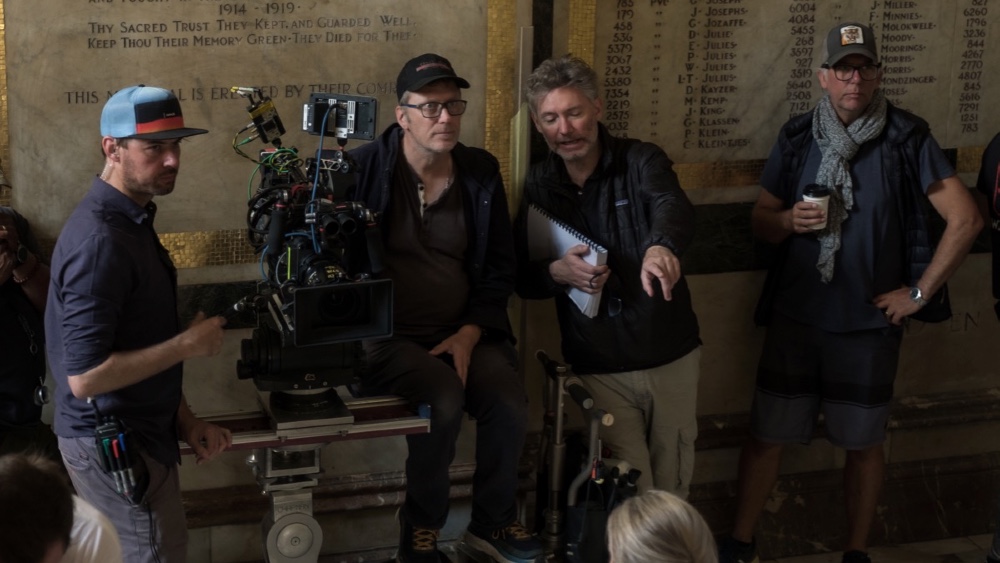
Twenty years ago, Scottish director Kevin Macdonald won an Oscar for his documentary, One Day in September, but in the two decades since, he has successfully straddled the line between narrative and documentary with a filmography that constantly sees him trying new things.
Macdonald’s latest film, The Mauritanian, allows him to continue to balance the two genres, as it relays the true story of Mohamedou Ould Slahi, played by Tahar Rahim, who was taken from his home in Mauritania shortly after 9/11 and thrown into the Guantánamo Bay detainment camp, accused of having connections to al Quaeda. Slahi remained there for 15 years where he was tortured and interrogated, while all the time, attorney Nancy Bannister (played in the film by Jodie Foster) was trying to get him back home. Slahi documented his travails in the best-selling book, Guantánamo Diary. The Mauritanian also stars Benedict Cumberbatch, a producer on the film, as Marine Corps Lawyer, Lieutenant Colonel Stuart Couch, who has been assigned to prosecute Slahi’s case, and Shailene Woodley as attorney Teri Duncan, who is working with Bannister on the side of Slahi’s defense.
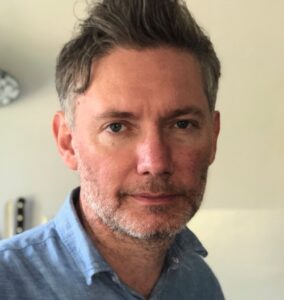
Macdonald’s film is a stark reminder of the poor souls who were detained at Guantánamo for knowing the wrong people or being at the wrong place at the wrong time, becoming pawns for a system that would use any means possible to get them to confess to wrong-doing. It’s one of Macdonald’s strongest narrative features since The Last King of Scotland; last week, Rahim and Foster even received Golden Globe nominations for their performances in The Mauritanian.
On top of that, Macdonald’s latest doc, Life in a Day 2020, had its World Premiere at the virtual Sundance Film Festival last week. It’s the follow-up to the 2010 film Life in a Day, which assembled footage submitted by people capturing the events of their day on July 24, 2010. The new documentary takes the same approach, Macdonald and his team assembling footage submitted from around the world all shot on July 24, 2020 where the political upheaval and the global pandemic leads to some interesting insights and visuals from across the planet.
Recently, Below the Line spoke with Macdonald via Zoom about both projects.
Below the Line: This movie didn’t begin with you, but the producers were already developing Mohamedou’s book, so how far along was the project when you came on as director and what made you want tell this story?
Kevin Macdonald: I came in pretty early. I read the book first, and there was a very rough first draft screenplay being written. I thought the book was fascinating — the script was kind of fascinating, but a mess. The producers said to me, you’re the right person to do this. Don’t say “No” — speak to Mohamedou, to the guy it’s about. I was a bit intimidated to speak to someone who was accused of being al Qaeda and who had been imprisoned and tortured, and I thought would be highly embittered. Then, he was totally surprising. He’s such a warm, incredibly bright, well-read, well-educated, loves American culture, loves pop music, country music, and movies. We bonded over movies a lot. In Guantanamo, the guards brought in movies all the time, and he’d seen basically everything made in America between about 2001 and 2016, when he got released, including The Big Lebowski, his favorite movie, one of my top five movies. That was enough to run on. He’s seen that almost 100 times, and he’s very funny, because he speaks like a 19-year-old American marine guard, “F*ck this, sh*t that… Bro… Dude!”
It’s quite disconcerting when you see this guy in Mauritania speaking like this, but I wanted to tell the story of this man who has retained his spirit, more, that he’s been able to forgive. What happened to him? I thought that’s a story I want to tell. More than anything else, when I thought about it, I thought I don’t know a single American movie, of the mainstream anyway, which has a sympathetic Muslim character at the heart of it. That was striking to me, and I thought this guy can do that, and I knew exactly the actor, right from that moment to do it. Tahar, we’d worked together before we’re good friends. His English has gotten so good in recent years, I thought he can do this. He and I started plotting it and worked on it for a couple of years. Hard one to finance, obviously. It was made very cheaply in South Africa and a little bit in Mauritania. We shot Mauritania for a week.
BTL: I was going to ask where you filmed it, because Guantánamo Bay probably isn’t letting anyone make movies there yet, if ever.
Macdonald: No tax breaks. [chuckles] No, we shot in South Africa, because it provides… you can build on a coast. They’ve got the set on the coast, which is very hard to do with beach and whatever. You’ve got a city in Cape Town, which is, generic American, I suppose you could say, and you’ve got very good crews. Then we all flew up to Mauritania for a week, which is an incredible, really a land that time forgot sort of place with people wearing these incredible colored costumes. The music that you hear at the wedding, it feels it feels like the most exotic place you can go to in the world.
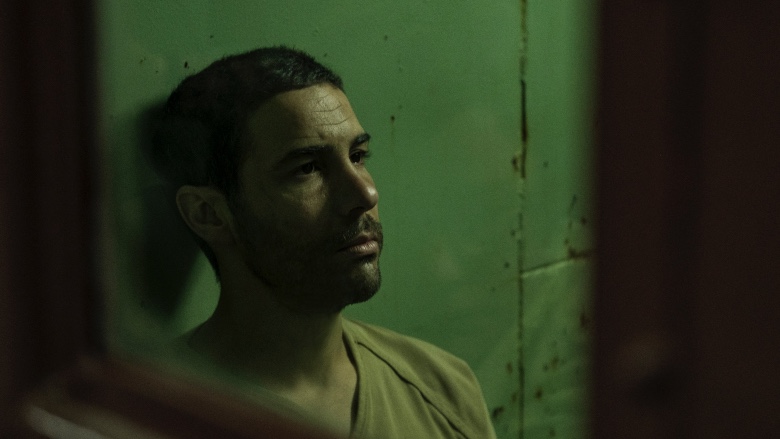
BTL: You’ve worked with your Production Designer Michael Carlin before, on Last King of Scotland and a couple others. How did you proceed to recreate Guantánamo Bay, considering that there may be some pictures but probably not a lot?
Macdonald: No, there’s not a lot. It’s surprisingly difficult to find, because there are some photos on the internet, taken by guards and things. Some of them are fake, and are not actually Guantánamo, and a lot of them are taken after our period, because the camp developed a lot and there are many different parts of it now. We had several resources. We had Mohamedou, first and foremost, who was very keen that this place feel look like the real Guantánamo that he experienced. He said to me that the American government spent millions of dollars preventing anyone knowing what this place was like. That’s the important thing to me. In terms of authenticity, he wanted it to feel right. Michael spent time with Mohamedou. Mohamedou would sketch out what the cells were like. We’d measure them using Mohamedou’s body as a measuring tape. That was the number one resource, then there’s also a guard who really befriended Mohamedou called Steve who’s depicted in the film, and they’ve remained very friendly. Steve went to visit Mohamedou a couple of years ago, and he was very helpful in terms of describing costume issues, how they chained them up, the procedures they’d use, etc, etc. And then, of course, the lawyers themselves, they had been there to certain parts of the camp, so they could describe that as well.
BTL: Was Mohamedou able to go to South Africa while you were filming?
Macdonald: He was. It was the only place he was able to get to apart from Guantánamo and Mauritania in the last 20 years, because nowhere else will give him a visa. South Africa gave him a visa, and he came down for a week, which was an incredibly exciting thing for the whole crew. It’s always exciting when you’re making a movie about real people, so when the real people come, everyone’s a-flutter. He came with Nancy, the real lawyer, and it was lovely seeing them together. They’re like an old married couple who spent so long together, sitting in that cell talking and talking and talking. That was very sweet. When he came to the set, Mohamedou did find it very difficult, as you’d imagine. He suffers from PTSD. He walked on the set, but he’s very polite, so he’s never going to say anything immediately, but you could just see his face shift, and he started to shake a bit. He’s sitting down and watching the monitor, and we were doing a scene with with Jodie and Shaileen and Tahar, and he lasted half an hour, and he said, “I have to go.” And he left. Of course, he tries to push all of that down to one side, and he hasn’t had the opportunity to deal with it with therapy, because there’s no therapy in Mauritania, so it’s not surprising.
BTL: I want to ask about working with your heads of departments. Michael you’ve worked with before. Justine, your editor, you’ve worked with many times before. You kind of bounce back and forth between narrative and documentary films, so is it hard to get some of the same people back from project to project? Or are you always looking for different people depending on the project?
Macdonald: If you like and trust an HOD and you think they’re talented, it’s always great to have the shorthand and know where you stand with people. For Michael, I know that he turn up in a place like South Africa, and he’s such a can-do Australian guy, he’s not going to be put off by any of the practical challenges. He relishes that. Alwin Küchler, the DP, he’s an old friend of mine, known each other for 20 something years. He actually shot half of the first documentary feature I did that I won the Academy Award for, One Day in September. He shot that, and he shot half of the Bob Marley documentary I did a few years ago. We’ve worked together on documentaries, but we’ve never worked on fiction, but I always admired his work. The Steve Jobs film he did with Danny Boyle – he’s done a few films with Danny Boyle, but that Steve Jobs film is one of Danny’s best-looking films, if not one of the best-looking films. He did Sunshine, another incredible looking film. He’s worked with Lynn Ramsay and a lot of great filmmakers. He hadn’t been working much in features recently for various personal reasons. He’d really been doing just commercials for several years, and he was desperate to get back into fiction. I went to see him in LA. I happened to be there. We just met for coffee, and he said, “What are you doing?” And I said, “I’m trying to make a film out of Guantánamo Diary, and he said, “Are you kidding me? I’m just listening to that on audio tape in my car just on the way here, and it’s so fascinating.”
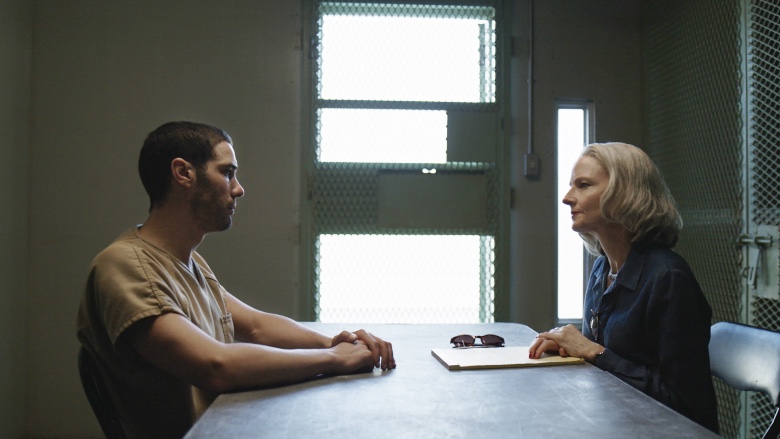
Two years before we made it, we were already talking about it, so a lot of conversations had gone into the thoughts of how to shoot it, how to separate, visually, the different timelines. One of the things that both Justine the editor and he really did so well, that it’s almost seamless, people barely notice that you’ve got this complexity of structure with three different periods of time, three different characters who you’re following. And yet, I haven’t heard anyone yet say to me, “Oh, I’m confused.” That’s a testament to the two of them, I think, as much as anything else.
And then Alexandra Byrne, the costume designer, she’s obviously one of the greats of the moment. She’s worked on everything from Mary Queen of Scots, Elizabeth, sort of those big period things, but also, she’s kind of Marvel’s go to person. She’s done Avengers, she’s done Captain America. She’s worked with Benedict before on Dr. Strange, and she just fell in love with the script, and said, “I want to do something totally different.” She brought an assistant, for one half of it. She said to me, “The whole costume budget on your movie is the same as I would spend on one character on a Marvel movie.” She brought with it this incredible dedication and focus on detail. She was very concerned, as we all were, about getting the Guantánamo stuff accurate, so she would find out where are these things made, buy those prison uniforms, the different colors – there are three different colors. Where exactly is he going through those, the military uniforms, etc. etc. etc. She brought incredible attention to detail in that way, but also in terms of, there’s a lot of subtle aging that’s going on in Mohamedou’s look. Where are we in terms of the amount of food and excrement and whatever that’s on him? To have someone of her caliber working to film with such a small budget was a total dream, and then who else is there? Who have I forgotten?
BTL: I personally was amazed when I saw her name on there and based on the movies she’s done, I wasn’t sure what the appeal would be to do costumes for a movie set in Guantánamo Bay. The Mauritania portion would obviously have some flashier costumes.
Macdonald: I think it’s the same as the cast on this film. I think this movie probably has the best cast of any movie this year. They all did it, as the crew did, for basically scale, because they believed in this movie and felt it was an important movie to make. Everyone has given an awful lot of work, and sometimes, it’s really nice to feel like we’re doing something that’s really worthwhile and for everyone to feel that in the same way. For the whole crew, that’s something which bonds everyone together in a way to weather hardship or difficulties. Alwin, again, is used to working with huge budgets for his lighting, and when he’s told “You can have three redheads, and that’s it.” He’d be momentarily nonplussed and then he’d go, “Okay, I’m going to think about how I’m going to do this. I think there’s something very nice about that.
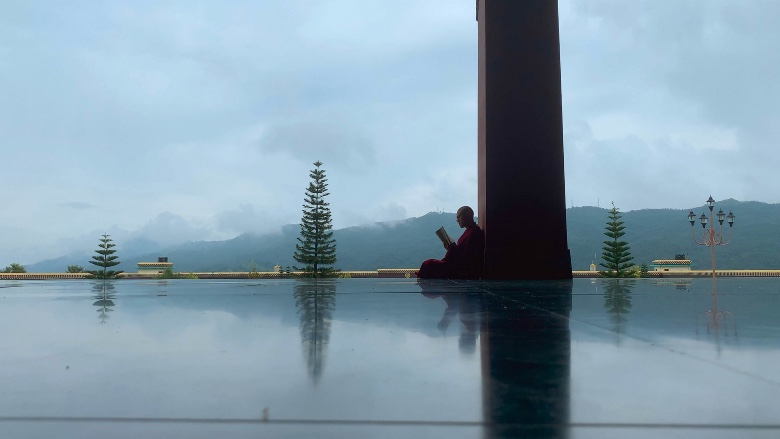
BTL: I do want to talk about Life in a Day 2020, which I haven’t seen yet, but I’ll see it tomorrow at its Sundance premiere. I saw the original movie 10 years ago, so had you always planned to do another one in exactly ten years or did the circumstances that came up in 2020 make it impossible not to do another one?
Macdonald: No, we didn’t. We talked about doing another one immediately after the first one, and over the years, Jack Arbuthnott, the producer, and I, we talked about it. I had always been busy or he was busy or whatever, and we never really did anything. And then back in March last year, he phoned me up and said, “We’ve got to do it this year. This is the 10th anniversary, and if we don’t do it now, that’s it.“ And so, COVID obviously was there, but I thought, “It’ll be over by May, June, this COVID thing…”
BTL: I think we all thought that.
Macdonald: Because I was worried that maybe… I didn’t want it to be overwhelmed by COVID and be “the COVID film.” I think in the end, it’s not when you see it, COVID is present in the center stage for about five or 10 minutes. The rest of the time, it’s maybe a shadow looming over some of it, but because of the state of the world last year, politically and in terms of the pandemic, I think it really changed the kind of things that people filmed, that it changed the amount of thought that went into things. So it’s a much more profound film, I think, than the first one.
The first one, when you look back at it, has this bouncy naivety, because the internet and YouTube at that time, they’re new and they’re kind of anarchic. They haven’t become these kind of corporate behemoths yet with people making millions of dollars as influencers and all that — that didn’t exist. The flavor of it is very different. I think it’s kind of beautiful, and actually shares really, the same theme as The Mauritanian which is about humanizing people and realizing that we are all connected. I mean, it sounds cliched or whatever, but this is the theme of Life in a Day, but also, in a way, the theme of The Mauritanian, which is that we love to other people, we love to make people out to be different than us. But actually, when you look at fundamental things about people, we all share the same desires and fears and loves. We all have so much more in common than we do differences. I think that humanizing principle, I suppose I would call it, is what led me want to make The Mauritanian, but also, I think is the impulse behind Life in a Day. I feel it very strongly in this Life in a Day. I’d be curious to know what you think.
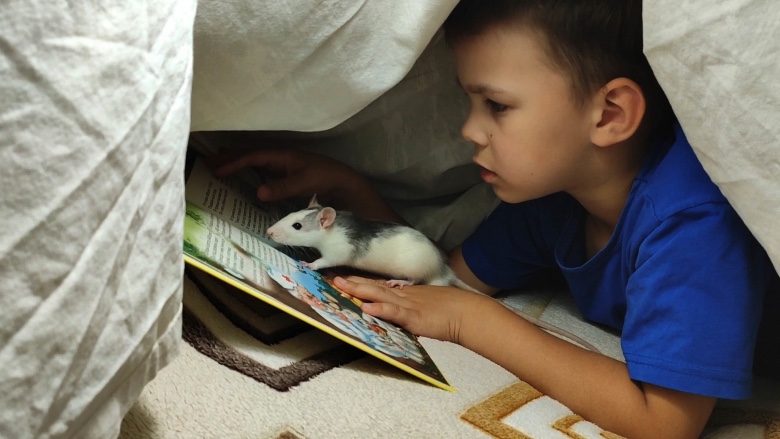
BTL: Obviously, the camera phones would be better. I’m not sure if the iPhone 12 was out on July 24.
Macdonald: I got to color time this in a proper theatrical color-timing [studio] and do a great sound mix with a wonderful sound team here in the UK, because it’s made for to be shown theatrically. The first one did limited theatrical and lots of festivals and whatever. This time, of course, it’s just going to be on people’s computers and TVs and stuff, but the quality is so much better. Not surprisingly, we’re all now so used to communicating visually, and so people know, instinctively, you don’t hold the camera like this. Hold it steady. Make sure that the air conditioning isn’t on. Those are things that bedeviled the first film. Actually, this time around, just the technical quality of everything was better, the phones look better. When you see on the big screen some of these, I guess probably the iPhones or Samsungs, the top-end stuff that some people shot on, you’re like, “Why would anyone bother to film on a professional camera?
Even the sound. I was talking to the sound guys, and I think it’s maybe the microphones or the algorithms or whatever inside these phones, they now pick up the sound so much better. Again, there’s bits in there, I would look at the sound guys and go, “This sounds like professionals to me. How is that possible?” I mean, they’d clean it up, they’d do whatever their jiggery, pokery magic to it, but that’s the thing about Life in a Day. Technically, people think it’s just a collection of home videos and put them together. Boom. But actually, the amount of effort that goes into obviously making it have a sort of narrative, a thematic flow, musically, and also just in the post-production, there’s a ton of post-production that goes on to make it have some gloss and have a flow to it.
BTL: I feel like we’re all getting used to it, and even these Zoom junkets are just getting so much easier and normalized than being at a hotel and having to go from floor to floor to find the room to do your interview.
Macdonald: I’m always feeling bad about the amount of pastries and fruit that’s going to be wasted. [laughs]
BTL: I feel bad for the pastry and fruit industry, because they’re losing money, but that’s a good point about the waste. Anyway, it’s great to talk to you again. Do you know what you might do next? Do you have another doc planned yet?
Macdonald: I don’t know. I have a couple of documentary projects that are floating around. I don’t have a feature project. Will features still exist in a couple of years? Who knows? I don’t really know. I’ve done these two films back-to-back while everyone else was having a quiet lockdown, I started working on September 2019, prepping The Mauritanian, and I went straight through lockdown straight into life in a day. They’re both, bizarrely coming out in the same kind of month or six weeks. And I’m so I’m kind of ready after this is over. I’m ready for rest. My own personal lockdown.
The Mauritanian will hit North American theaters on February 12th.
Life in a Day 2020 will presumably turn up on YouTube sometimes this year.
The Mauritanian pictures courtesy STXfilms, Life in a Day 2020 photos courtesy YouTube Originals/Sundance Film Festival.





